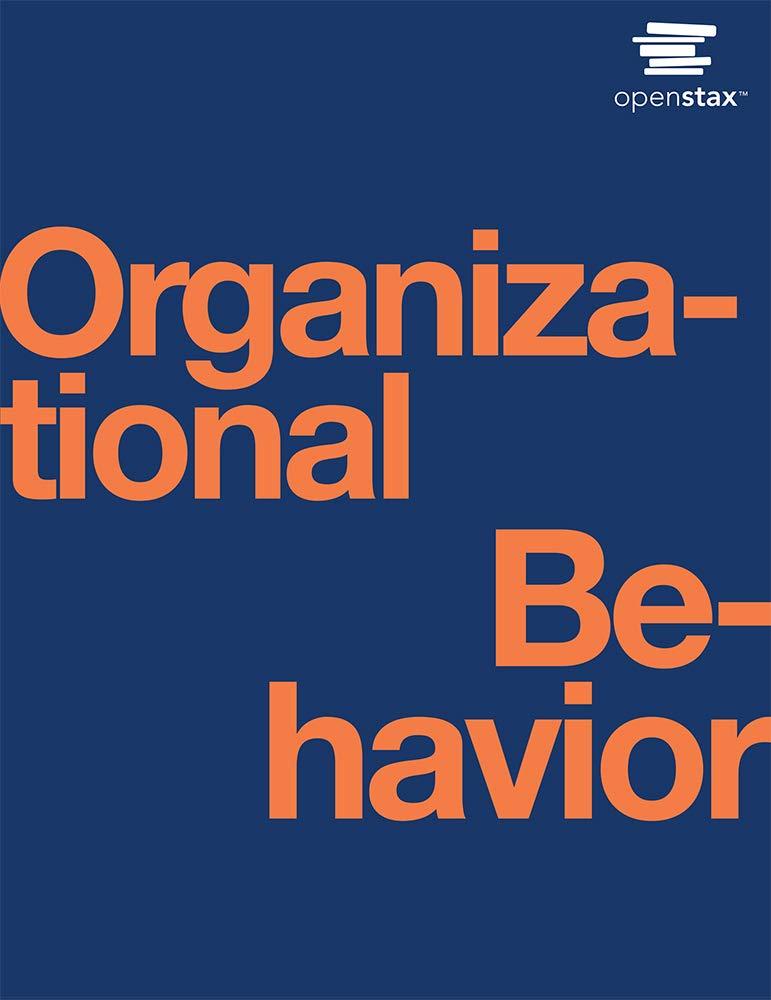Because of demographics, with most of their employees coming from northern U.S. states, Canada, and northern European
Question:
Because of demographics, with most of their employees coming from northern U.S. states, Canada, and northern European countries, there was probably no organization more racially uniform than the National Hockey League. In these days of increased attention on social issues and changing demographics, the NHL needed a drastic shift in its approach to inclusivity and the social issues it addresses. Two of the best people to usher in change, they decided, were an accomplished executive untouched by old-guard hockey culture and a former player. Kim Davis knew that she was different from many executives, managers, coaches, and players in the National Hockey League. She welcomed the challenge, and it was a major attraction that led her to accept the position. She looks like no one else holding the position of executive vice president at the NHL, which has primarily been run by (a) men and (b) white men in its over-100-year history. The league signaled a long-overdue shift in thinking when it named Davis, a black woman, as executive vice president of social impact, growth initiatives, and legislative affairs.
In a time when the NHL is trying to adapt and become more welcoming to those who feel they don’t belong or haven’t been allowed to belong in the sport, the perfect person to initiate change was someone from the outside, someone free of a hockey culture that has become stale by current social standards.
Especially compared to the other major North American pro sports, hockey sometimes unfairly gets accused of being tone-deaf or at least resistant to change. The league is working hard to improve its commitment to inclusivity, with initiatives like the Declaration of Principles and Hockey Is For Everyone, but change doesn’t come easy for players, coaches, administrators, and fans of the sport. Davis represents the NHL’s attempt to shepherd the game through social change—internally and externally. That’s been her area of expertise throughout her professional life. At JPMorgan Chase she endured nine different mergers, and her job was to help her employees prepare for change.
“Most people aren’t comfortable with change, and often when they say that, what they really mean is that they are comfortable with change, but they aren’t comfortable with change happening to them,” she said. “It’s all about what happens to us, so how as a leader do you help people get through that? “We may not be able to control that fan and that microcosm of society that is over-indexed in our sport,” she said. “Over time it will change as we introduce new fans, and guess what? Even that classic model of our fans, that white male, generationally, their kids, they’re not buying into that even if their parents are.” "Find another hockey executive who will touch a topic like that without tapdancing.” And that’s why Kim Davis is here. She’s the outsider turned insider, the voice of those formerly neglected. And she’s just getting started.
Regarding climate change, why did the NHL attend the historic climate change conference in Paris? As NHL President Gary Bettman states: “Our game, which is probably unique to most other professional sports, is so tied to the environment. We need cold weather; we need fresh water to play. Therefore, our game is directly impacted by climate change and fresh water scarcity. So, we developed NHL Green, a mandate to promote this type of awareness across all our organizations. Over the course of the last five years, we've done everything from a food recovery initiative, which was taking all the unused food that we prepare in our arenas and donating it to local food banks ... to a water restoration program. All of that culminated in the release of a sustainability report in 2014, which was the first of its kind from any U.S. pro sports league. It's important to us.”
The NHL players are also interested. One individual is recently retired player Andrew Ference, who introduced green initiatives like the NHL Players Association Carbon Neutral Challenge. While he was a player with the Stanley Cup champion Boston Bruins, he knew that he wanted a career after retirement from the NHL and decided to attend the Harvard Business School, where he earned a certificate in Corporate Sustainability and Innovation. Since he really prioritized sustainability in his life, it was a natural progression to a second career after his retirement. Ference says, “I’ve had a lifelong passion for the environment and sustainability issues. But, before leaving the NHL, I wanted to back that up with some formal education. When I signed up for that first class, I knew in my gut it was a big moment.” Commissioner Gary Bettman says that the next stage regarding sustainability is to “…engage more players around this issue because when we put out stuff on our social media platforms, 12 million followers on social media, that definitely gets messaging out to fans. But when you get an Andrew Ference, that's when you get a lot more engagement. We need to educate our athletes on this issue because they grew up on frozen ponds, they get the connection between learning to play outside and environmental issues. They get it.”
1. What types of changes that Kim Davis is addressing for the National Hockey League, such as demographics, “hockey culture,” and climate change, relate to the concepts?
2. How are the roles of Kim Davis, Gary Bettman, and the players regarding change defined in the concepts of this chapter?
Step by Step Answer:






